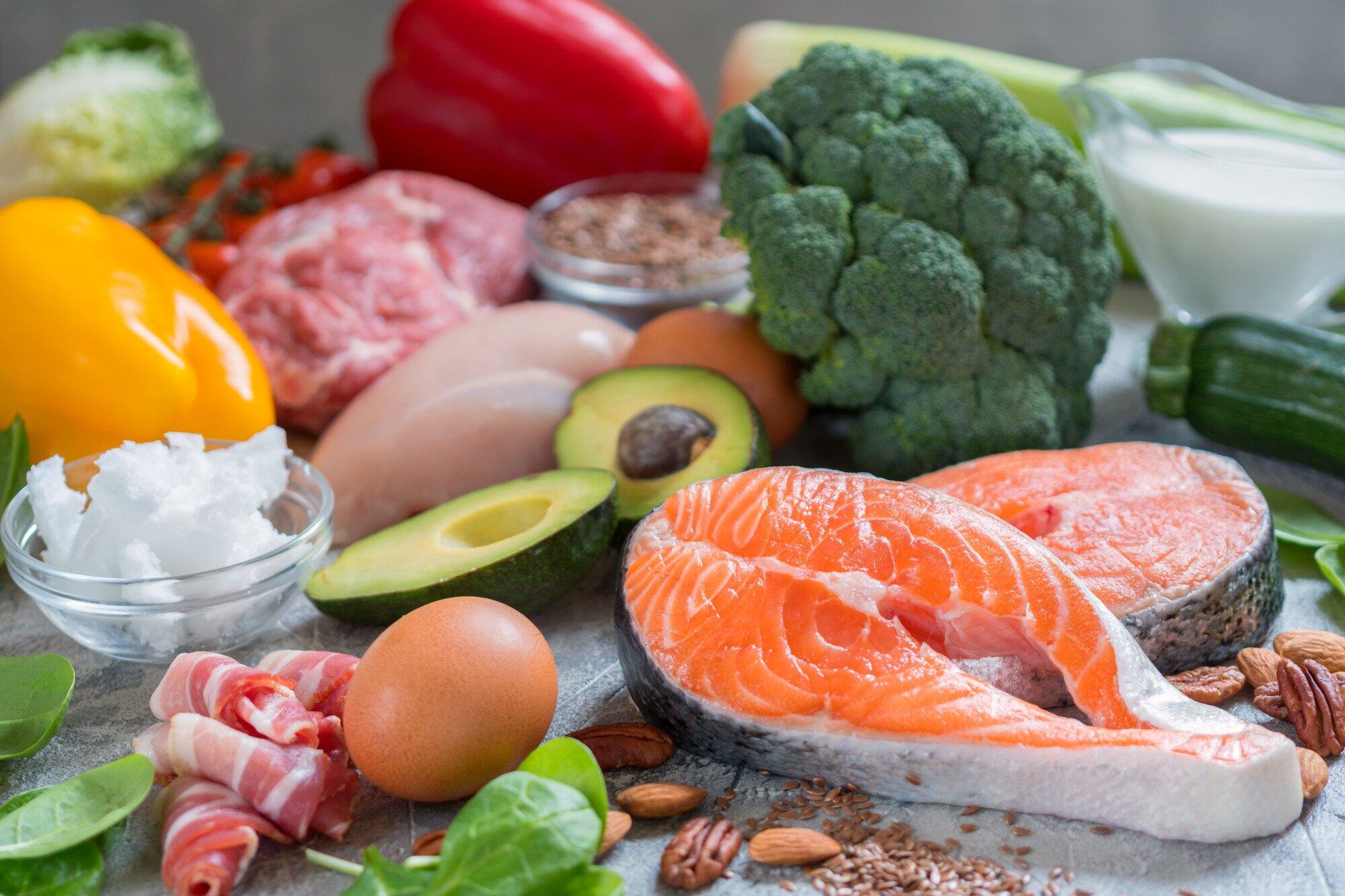Are you the kind of dieter who counts calories when going for weight loss? Well, then you need to understand the meanings of the terms "active calories" and "total calories" and how they come into play during a diet.
Many people either don't know what these terms mean or use them inaccurately, which means they don't optimize their physical activity and overall well-being.
This article aims to break down the differences between active calories vs total calories, exploring their definitions, the factors that influence them, and more, so let's get started.
Defining Active Calories
Active calories, also known as exercise or workout calories, represent the energy your body expends during physical activity. This can include a wide range of activities such as:
- Walking
- Running
- Cycling
- Weightlifting
- Yoga
- Pilates
- Other forms of exercise
Active calories specifically account for the calories burned while engaged in intentional, purposeful movement.
When you engage in physical activity, your body demands additional energy to fuel the muscles, support cardiovascular functions, and maintain overall metabolic processes. This increased energy expenditure during exercise is what is quantified as active calories.
Various fitness trackers, smartwatches, and health apps use sensors, heart rate monitors, and algorithms to estimate the number of active calories burned during a workout session. They help you reach your fitness goals faster.
The great thing about monitoring active calories is that it motivates you while you are working out to go harder, to try better, and to keep going.
Factors Influencing Active Calories
You might have heard the saying, 'A calorie is not a calorie.' Essentially, this means that different people burn and use calories in different fashions.
Several factors influence the number of active calories burned during exercise:
Intensity of Exercise
The more vigorous the exercise, the higher the energy expenditure. High-intensity workouts, such as interval training or sprinting, generally result in a greater number of active calories burned compared to low-intensity activities.
Duration of Exercise
The longer the duration of your workout, the more calories you are likely to burn. Extended sessions of cardiovascular exercise and endurance activities contribute to higher active calorie counts.
Body Weight
Body weight plays a role in calorie expenditure. Typically, individuals with higher body weights burn more calories during the same exercise than those with lower body weights.
Age and Gender
Age and gender influence metabolic rates, which, in turn, impact calorie burning. Generally, younger individuals tend to have higher metabolic rates. Men may burn calories differently than women due to variations in muscle mass and hormonal factors.
Understanding Total Calories
While active calories focus specifically on the energy expended during intentional physical activity, total calories encompass the overall energy expenditure throughout the day. Total calories represent the sum of the calories burned during active pursuits, the basal metabolic rate (BMR), and the thermic effect of food (TEF).
Total calories provide a more comprehensive view of your daily energy balance, considering not only intentional exercise but also the energy needed for basic bodily functions and the processing of consumed food.
Basal Metabolic Rate (BMR)
BMR represents the number of calories your body requires at rest to maintain fundamental physiological functions such as breathing, circulation, and cell production. It accounts for the calories burned during periods of inactivity, like sleeping or sitting.
If you have more muscle on your body and less fat, you end up burning more calories just sitting around. That's why so many fitness gurus are always telling you to add strength training to your regimen. This will ensure your BMR increases, and you burn lots of calories even while you rest.
Thermic Effect of Food (TEF)
TEF refers to the energy expended during the digestion and absorption of food. The body uses calories to process nutrients from the food we consume. The TEF contributes to the total calories burned throughout the day.
You might have heard that celery burns more calories to crunch and digest than the calories you might get from it. It's labeled as a 'negative thermic' food. Other low-calorie items like lettuce, cabbage, apples, etc, are also labeled similarly.
We hate to break your bubble, but this is essentially a dieter's myth. Yes, these foods have very low calories. In no way are they negative calorie foods, though.
This doesn't mean that you shouldn't add these healthy items to your diet but don't think you can indulge in them because they aren't adding any calories to your plate.
It's better to have high-protein items like protein shakes or smoothies which fill you up and keep you satisfied for longer.
Factors Influencing Total Calories
As with everything else, each person has a different amount of total calories depending on their lifestyle, diet, and habits. Some of the factors affecting this are as follows.
Physical Activity Level
The amount and type of physical activity you engage in influences both active and total calorie expenditure. A more active lifestyle contributes to higher total calories burned.
Body Composition
Lean muscle mass requires more energy than fat tissue. Individuals with higher muscle mass may have a higher BMR, contributing to increased total calorie expenditure.
Dietary Habits
The composition of your diet affects the thermic effect of food. Diets rich in protein (tip: make sure to have a high protein breakfast), for instance, may result in a higher TEF, contributing to total calorie expenditure.
Health Status
Certain health conditions or medications can influence metabolic rates and, subsequently, total calorie expenditure. Additionally, factors like stress and hormonal imbalances may impact overall energy balance.
Interplay Between Active and Total Calories
Understanding the relationship between active and total calories is essential for individuals aiming to achieve specific health and fitness goals. You can't just focus on one or the other when trying to lose weight or gain muscle.
Here are some key considerations:
Weight Management
For weight loss, creating a calorie deficit-burning more calories than you consume is crucial. Monitoring both active and total calories helps you gauge your energy balance and adjust your exercise and dietary habits accordingly.
Fitness Goals
If your fitness goals involve improving endurance, building muscle, or enhancing overall cardiovascular health, paying attention to active calories during exercise provides valuable insights. To optimize performance and recovery, ensure that your overall calorie intake aligns with your fitness objectives.
Holistic Health
Total calories provide a holistic perspective on energy balance, considering the cumulative impact of physical activity, basal metabolic rate, and the thermic effect of food. A balanced approach to health involves both staying active and supporting overall well-being through nutrition and lifestyle choices.
Monitoring and Tracking
Too many people who are on diets assume that they can just guess how many calories they are consuming or burning a day. But those guesses are usually off by a mile. They are more like wishful thinking, rather than reality-based thinking.
To effectively monitor active and total calories, it's better to use technology and tools, many of which are easily available on the market. These will never lie about how active you are and how many calories you have consumed (as long as the information entered is truthful).
Fitness Trackers and Smartwatches
Wearable devices equipped with sensors and heart rate monitors can provide real-time data on active calories burned during workouts. Many of these devices also offer features for tracking overall daily calorie expenditure.
Apple Watches, Fitbit, and Garmin Trackers are the most well-known. But there are many others on the market. If cost is an issue for you, then make sure to shop around.
Health Apps
Mobile applications designed for health and fitness tracking often include features for monitoring both active and total calories. Users can input their dietary intake and track exercise to gain insights into their overall energy balance.
You can also use these apps to track your steps during the day, your bike rides, or any hikes you might go on. An example of such an app is Strava. It's free and all you need to do is start an activity on it for it to start tracking it.
Nutritional Labels and Calculators
Understanding the caloric content of the food you consume is essential for calculating total calories. Nutritional labels on packaged foods provide information on calories per serving, and various online calculators can assist in estimating the calorie count of homemade meals.
Remember that food manufacturers are always trying to trick you into believing that their foods have less food than they do. You need to read the labels carefully and make sure you figure out what one serving means on the label.
Is one serving 15 or 30 chips in that protein chip bag? This makes a big difference in how many calories you consume and how they affect your daily intake.
Active Calories vs Total Calories-Learn the Difference
If you are ready to get the body of your dreams, you need to start by learning the difference between active calories vs total calories. Once you have this down pat, you can start calculating things properly and creating a negative energy balance.
One huge thing that will help you on this journey is healthy drinks and foods. These foods are made for dieters like you, who are conscious about what they put into their mouths.
Check out our catalog of protein bars that can keep you feeling full throughout the day and prevent random snacking.



Leave a comment
This site is protected by hCaptcha and the hCaptcha Privacy Policy and Terms of Service apply.